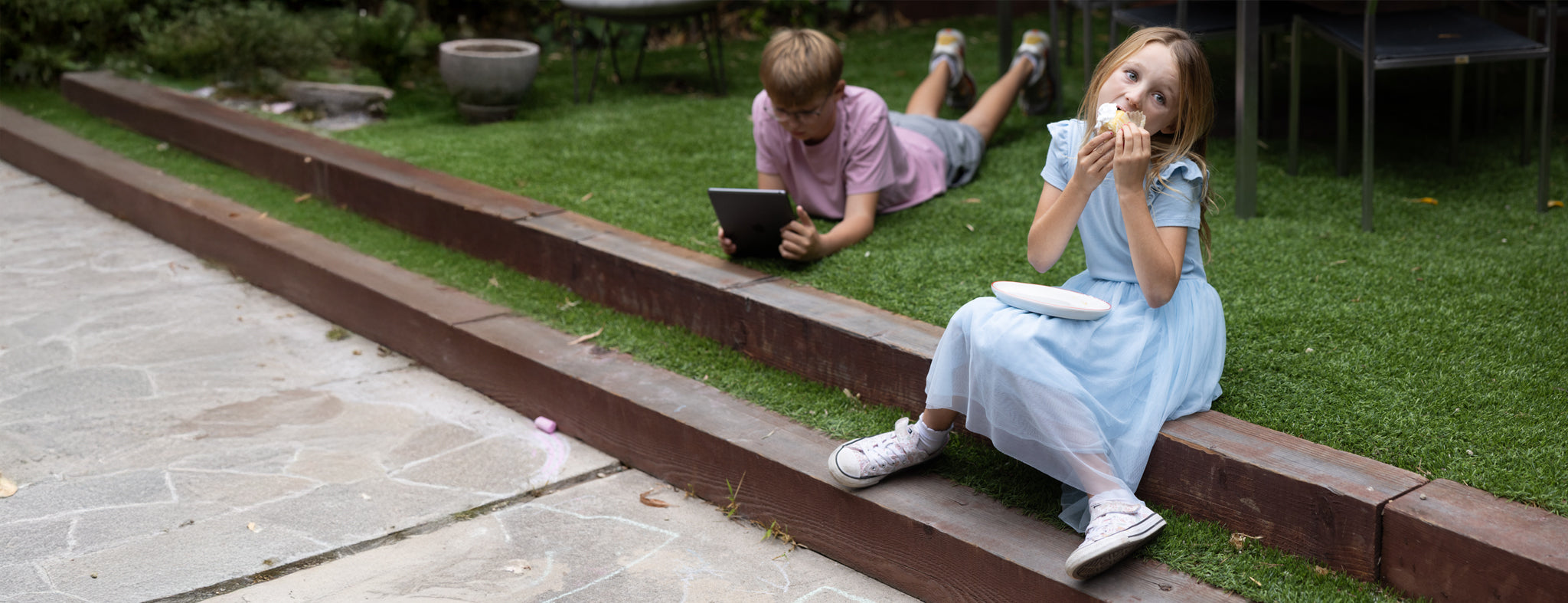
How to create a homeschool schedule for kids with ADHD
Homeschooling a child with ADHD is a unique challenge, but it can be a rewarding way to create an environment where your child thrives. Traditional schools often struggle to accommodate the needs of children with ADHD, with their rigid schedules, limited breaks, and focus on sitting still for long periods. Homeschooling, on the other hand, allows for flexibility and customization that can cater to your child’s strengths and help them learn in ways that work best for them.
Here’s how a homeschool day for a kid with ADHD looks, tips to get the most out of your day, and what to do when things don’t go as planned.
How a homeschool day differs from brick-and-mortar schools
Unlike traditional schools, where schedules are fixed and transitions can feel abrupt, homeschooling allows you to tailor every aspect of your child’s day. For kids with ADHD, this makes a huge difference.
Here's what sets homeschooling apart for kids with ADHD:
-
Shorter, focused lessons: Instead of long hours of back-to-back classes, you can create shorter lessons that align better with your child’s attention span.
-
Frequent brain breaks: Regular physical activity or fun activities between lessons can help your child reset and refocus.
-
Custom schedules: If your child concentrates best in the afternoon, you can start lessons later in the day.
-
Choice of environment: Lessons can move from the kitchen table to the backyard or even a library. A change of scenery keeps things fresh.
-
Hyperfocus advantage: Homeschooling allows you to encourage their natural curiosity and deep dives into topics they love without having to disrupt that focus.
With homeschooling, the structure and pace are entirely under your control, giving your child a sense of predictability and reducing stress by meeting their unique needs.
Get the best out of your homeschool day
Consider these four key tips to help make your homeschool day engaging and successful for a child with ADHD:
-
Start the day with a routine: A consistent morning routine, including breakfast and light physical activity, sets a positive tone.
-
Break learning into chunks: Use 20-30 minute lessons with short breaks for activities like dancing or outdoor play to keep focus.
-
Incorporate hands-on learning: Engage your child with multi-sensory methods like manipulatives or acting out lessons.
-
Prioritize exercise and focus times: Schedule physical activity to manage energy and align challenging tasks with their peak focus periods.
Example schedule
Morning
-
7:30 AM - 8:00 AM: Wake up and morning routine (brush teeth, get dressed, make bed).
-
8:00 AM - 8:30 AM: Nutritious breakfast.
-
8:30 AM - 9:00 AM: Physical activity (e.g., a short walk, jumping on a trampoline, or light stretching).
-
9:00 AM - 10:30 AM: Focused learning session (e.g., math or reading—rotate subjects that require high concentration).
Midday
-
10:30 AM - 10:45 AM: Break with a snack and a few minutes of unstructured play.
-
10:45 AM - 11:45 AM: Creative activity (e.g., art, music, or a science experiment).
-
11:45 AM - 12:30 PM: Lunch followed by free play or relaxation.
Afternoon
-
12:30 PM - 1:30 PM: Hands-on projects or interactive learning (e.g., building with blocks, crafts, or teamwork-based activities).
-
1:30 PM - 2:00 PM: Physical activity (e.g., bike riding, running, or playing a sport).
-
2:00 PM - 3:00 PM: Focused learning session or homework.
Evening
-
3:00 PM - 3:30 PM: Snack and wind-down time (quiet reading or listening to music).
-
3:30 PM - 4:30 PM: Social time with family or friends (e.g., board games or outdoor play).
-
4:30 PM - 5:30 PM: Finish any remaining assignments or learning activities.
Nighttime
-
5:30 PM - 6:30 PM: Dinner and family bonding time.
-
6:30 PM - 7:30 PM: Leisure activity (watch a show, read, or work on a hobby).
-
7:30 PM - 8:00 PM: Bedtime routine (bathe, brush teeth, and prepare for bed).
-
8:00 PM: Lights out.
Although it may seem like there are a lot of things in this schedule, it is designed to make the day manageable. Keep a balance of structure and flexibility to encourage focus and creativity. Adjust it as needed to suit your child’s interests and needs—it’s okay to make it your own!
When your homeschooling day doesn't go as planned
Even with the best intentions, some days may feel like a disaster. Maybe your child’s energy is off the charts, or they just can’t seem to focus. That’s okay. Here’s how to handle it:
-
Be flexible: If a planned lesson turns into a meltdown, it’s okay to hit pause. Prioritize your child’s emotional well-being over sticking strictly to the schedule.
-
Shift gears: Sometimes, all you need is a change of scenery or subject. Move the lesson outdoors or switch to a topic your child loves.
-
Talk it out: Validate how your child is feeling. If they’re frustrated or overwhelmed, give them space to express themselves and reset.
-
Reflect and adjust: Instead of viewing challenges as failures, treat them as learning opportunities. What needs tweaking? Could lessons be shorter? Would more frequent breaks help?
Remember, not every day will be perfect, and that’s okay. Celebrate small wins and focus on building a routine that evolves with your child’s needs.
Homeschooling offers kids with ADHD the opportunity to learn in a way that celebrates their strengths, rather than forcing them to conform to systems that don’t work for them. It allows families to create meaningful, flexible routines that nurture learning, curiosity, and self-confidence in ways traditional schools can struggle to do.
You can build days that feel enriching and empowering for your child, especially once you explore what to look for in homeschooling program for a child with ADHD. And most importantly, remember: you’ve got this!



